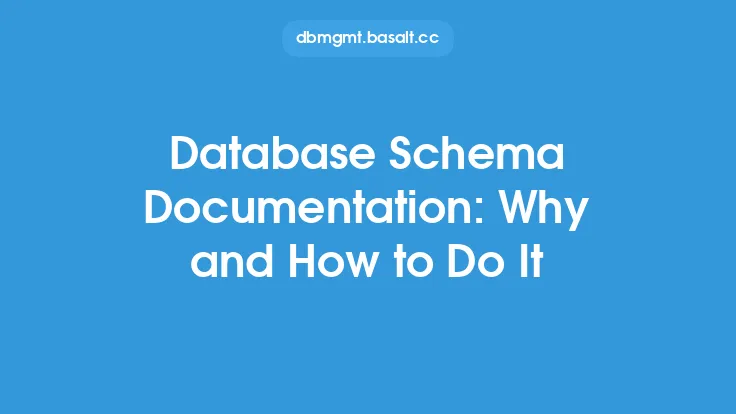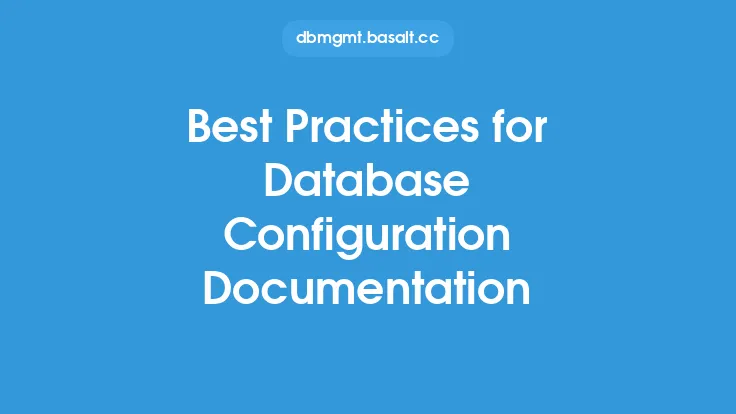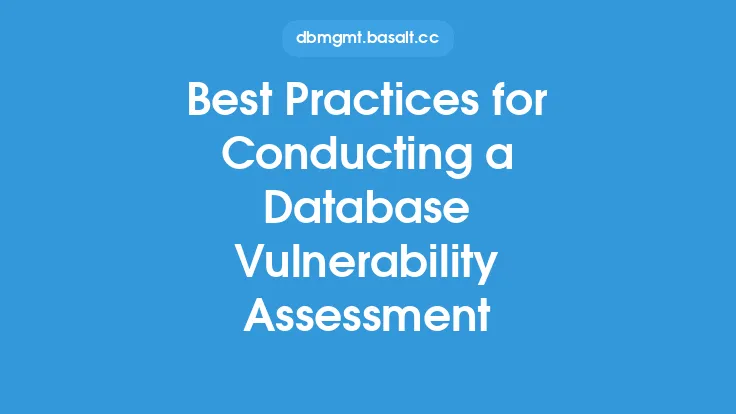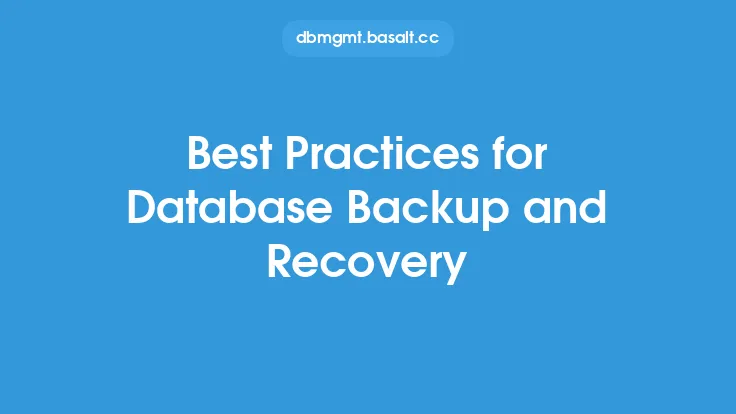Database documentation is a critical component of database administration, playing a vital role in ensuring the smooth operation and maintenance of databases. At its core, database documentation refers to the process of creating and maintaining a detailed record of a database's structure, components, and relationships. This documentation serves as a single source of truth, providing a comprehensive understanding of the database's architecture, data models, and dependencies. In this article, we will delve into the importance of database documentation for knowledge sharing, highlighting its benefits, and exploring the technical aspects that make it an essential tool for database administrators.
Introduction to Database Documentation
Database documentation is not just a nicety, but a necessity in today's complex database environments. As databases continue to grow in size and complexity, the need for accurate and up-to-date documentation becomes increasingly important. Database documentation provides a clear understanding of the database's schema, including tables, indexes, views, and relationships between them. This information is crucial for database administrators, developers, and other stakeholders who need to understand the database's structure and functionality. By maintaining accurate and detailed documentation, organizations can ensure that knowledge is shared effectively, reducing the risk of errors, and improving overall database management.
Benefits of Database Documentation for Knowledge Sharing
Database documentation offers numerous benefits for knowledge sharing, including improved collaboration, reduced errors, and enhanced decision-making. By providing a single source of truth, database documentation ensures that all stakeholders have access to the same information, reducing misunderstandings and miscommunications. This, in turn, facilitates collaboration among team members, enabling them to work together more effectively to design, develop, and maintain databases. Additionally, database documentation helps to reduce errors by providing a clear understanding of the database's structure and relationships, enabling administrators to identify and resolve issues more quickly. Furthermore, accurate documentation enables organizations to make informed decisions about database design, optimization, and maintenance, ultimately leading to improved database performance and reliability.
Technical Aspects of Database Documentation
From a technical perspective, database documentation involves creating a detailed record of the database's schema, including tables, indexes, views, and relationships between them. This documentation can be created using a variety of tools and techniques, including data modeling tools, database design tools, and documentation generators. Data modeling tools, such as Entity-Relationship diagrams, provide a visual representation of the database's structure, while database design tools, such as SQL scripts, enable administrators to create and modify database objects. Documentation generators, such as SQL documentation tools, can automatically generate documentation from the database's schema, reducing the time and effort required to create and maintain documentation. Additionally, database documentation can include information about database dependencies, such as stored procedures, functions, and triggers, as well as security and access control mechanisms.
Database Documentation and Change Management
Database documentation plays a critical role in change management, enabling organizations to track changes to the database's structure and functionality over time. By maintaining a detailed record of changes, including updates, inserts, and deletes, organizations can ensure that the database remains consistent and accurate. This is particularly important in agile development environments, where changes to the database can occur frequently. By documenting changes, organizations can ensure that all stakeholders are aware of the changes and can plan accordingly. Furthermore, database documentation can help organizations to identify and resolve issues related to changes, reducing the risk of errors and improving overall database reliability.
Database Documentation and Compliance
Database documentation is also essential for compliance, enabling organizations to demonstrate adherence to regulatory requirements and industry standards. By maintaining accurate and detailed documentation, organizations can provide evidence of compliance, reducing the risk of audits and fines. This is particularly important in industries such as finance, healthcare, and government, where regulatory requirements are stringent. Database documentation can include information about data governance, security, and access control, as well as data retention and disposal policies. By documenting these aspects, organizations can demonstrate their commitment to compliance and reduce the risk of non-compliance.
Conclusion
In conclusion, database documentation is a critical component of database administration, playing a vital role in knowledge sharing, collaboration, and decision-making. By maintaining accurate and detailed documentation, organizations can ensure that all stakeholders have access to the same information, reducing errors and improving overall database management. From a technical perspective, database documentation involves creating a detailed record of the database's schema, including tables, indexes, views, and relationships between them. Additionally, database documentation plays a critical role in change management and compliance, enabling organizations to track changes and demonstrate adherence to regulatory requirements. As databases continue to grow in size and complexity, the importance of database documentation will only continue to increase, making it an essential tool for database administrators and organizations alike.





